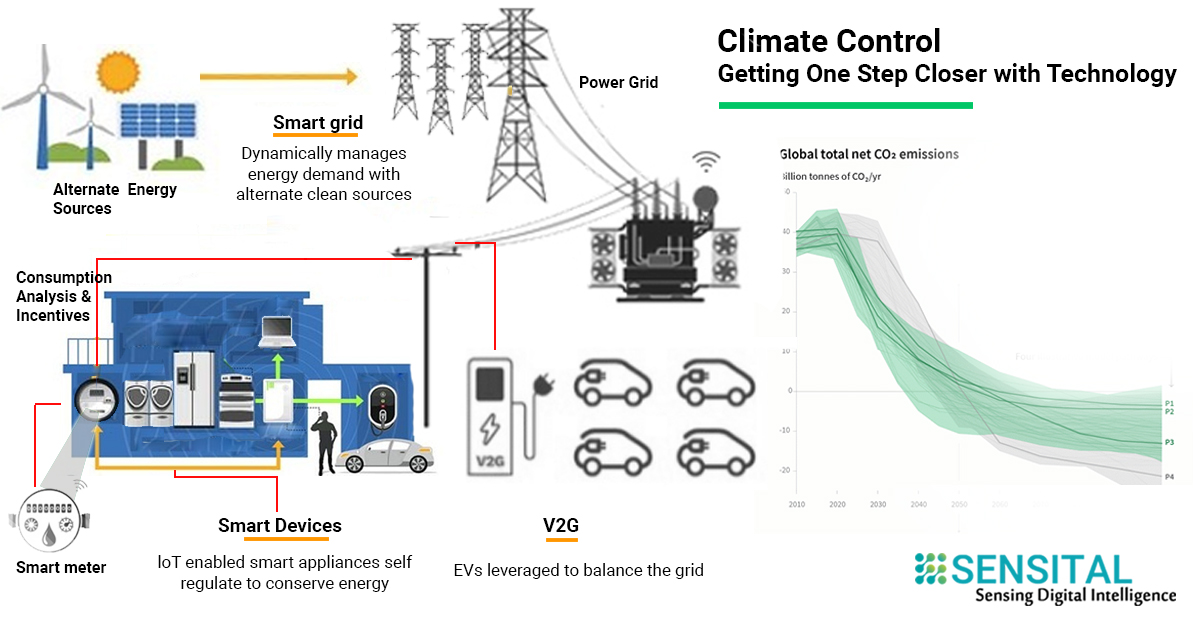
As the United States re-engages the global community in its fight on climate control, many other nations have also doubled down in their commitment towards the targets set as part of the Paris Agreement. Achieving carbon neutrality by 2050 is still the goal and legislative action alone will not be enough to achieve this. And while civic responsibility and self-governance is also an important factor, the truth is that technological innovation will play a critical role in the fight against global warming.
As a global citizen, I try and do my part in managing my carbon footprint and, as a technologist, I am leading my team in building solutions that can help us all achieve our collective goal of Net Zero ahead of schedule. With this in mind, Sensital has built effective and efficient energy management solutions, enabling operational efficiencies across the energy value chain. We will look at residential energy supply-demand and discuss how IoT may help achieve operational efficiencies, from the perspective of the consumer and the distributor.
Optimizing residential energy utilization, not only benefits homeowners, it also gives energy providers the ability to better manage their power grid. The key to enabling such solutions is to capture and monitor the “last mile” of energy transmission and consumption. So, we have to not only get to residential smart meters, but also to the different circuits behind the meters and every endpoint of electric power within the four walls of a home. For instance, the circuit for the kitchen may have the dishwasher, OTG, and a microwave connected to it and each of these endpoints has to be tracked and monitored individually. if the smart home is solar powered then, in order to better optimize the energy utilization, the solution should also continuously monitor the solar energy generated, its consumption by the home, and track any solar energy exported back to the grid and the energy that the home takes from the grid to account for its solar energy shortfall. This would then give us the energy consumption pattern that Solution providers can use to build a recommended energy utilization strategy for homeowners and anticipated demand patterns for the energy grid, energy pricing strategies, etc.
Sensital has built a solution using its iBOTics IoT platform, where it monitors the overall energy utilization pattern, including what is generated by solar panels, how much is consumed, and what is exported back to the grid. An example of a dashboard showing such utilization over time is shown below:

Using the in-built capability of Sensital’s platform to support a number of industry standards and communication protocols, along with its easy-to-use device discovery and configuration features, this solution can easily be extended to integrate with the numerous off-the-shelf devices available in the market to help us monitor the energy consumption pattern across each circuit in a home or take it to the end power point to monitor specific appliances or power sockets contributing to the overall energy consumption in a home.
The challenge, however, is in taking the visibility into energy consumption pattern and energy management of a single home and making that a part of a bigger Demand Response Management (DRM) ecosystem, where the energy consumption and generation (in case of homes that have alternate energy sources deployed) patterns of a number of homes in a region can feed into the DRM system and help balance the energy supply & demand.
To support this, we need a strong ability to quickly onboard a new home, identify and mark each power consumption point in that home, apply and manage custom rules for different homes and finally give the remote control in the hands of the service providers and/or the end home-owners.To fulfill these requirements, the platform should be capable of supporting multiple tenants, provide strong and secure access controls and be easily configured to onboard each customer with their own credentials for insights into their smart home.
Sensital’s multi-tenant iBOTics platform is designed to handle the challenges of interoperability while onboarding different homes, simplified business rules management, situational interaction flows and out of the box features for enabling controls in the hands of the end customer. The iBOTics platform can easily be extended to add on new features and simplify solution development and management for Solution Providers (aggregators, retailers, DRM service providers, etc.), allowing them to create a competitive advantage and bring a differentiated solution to market.
